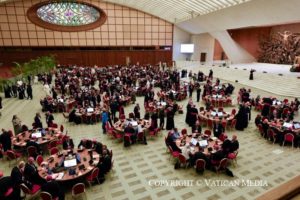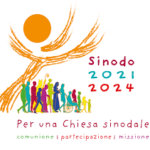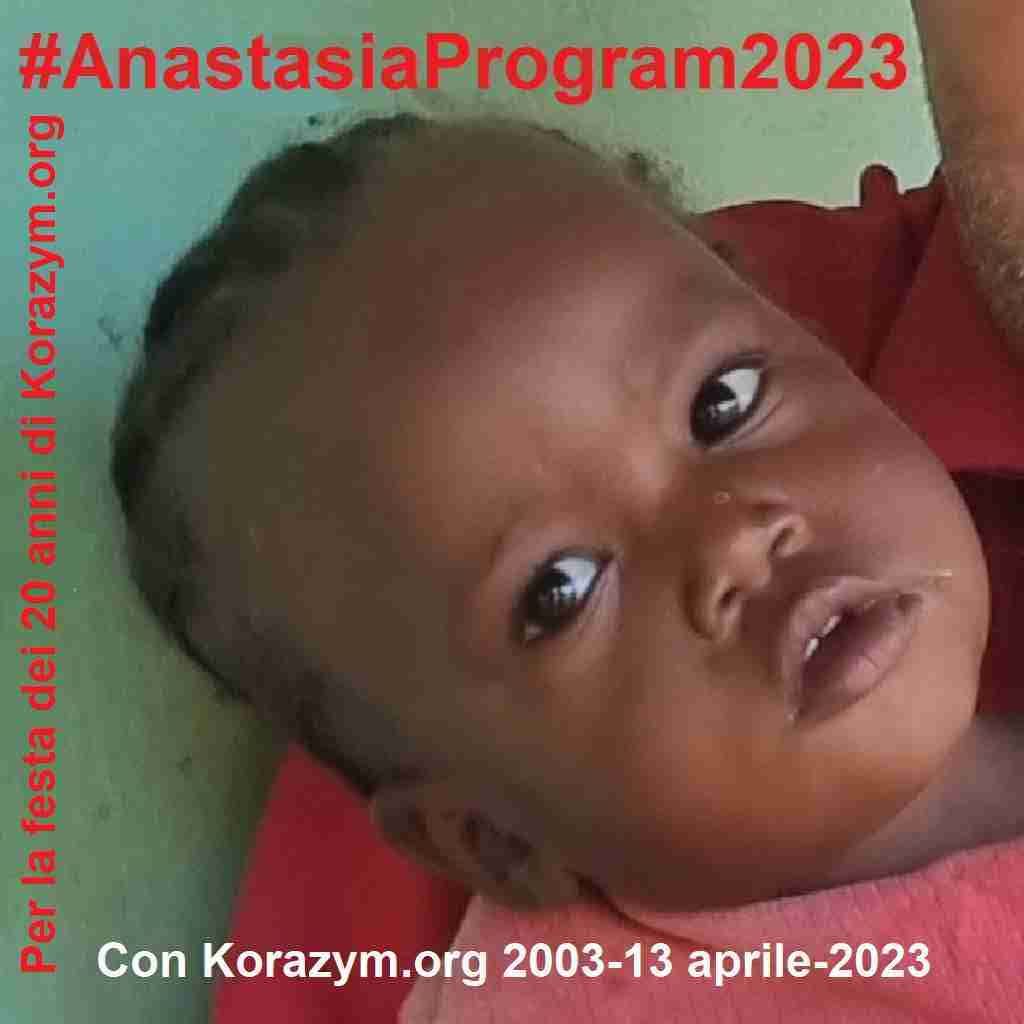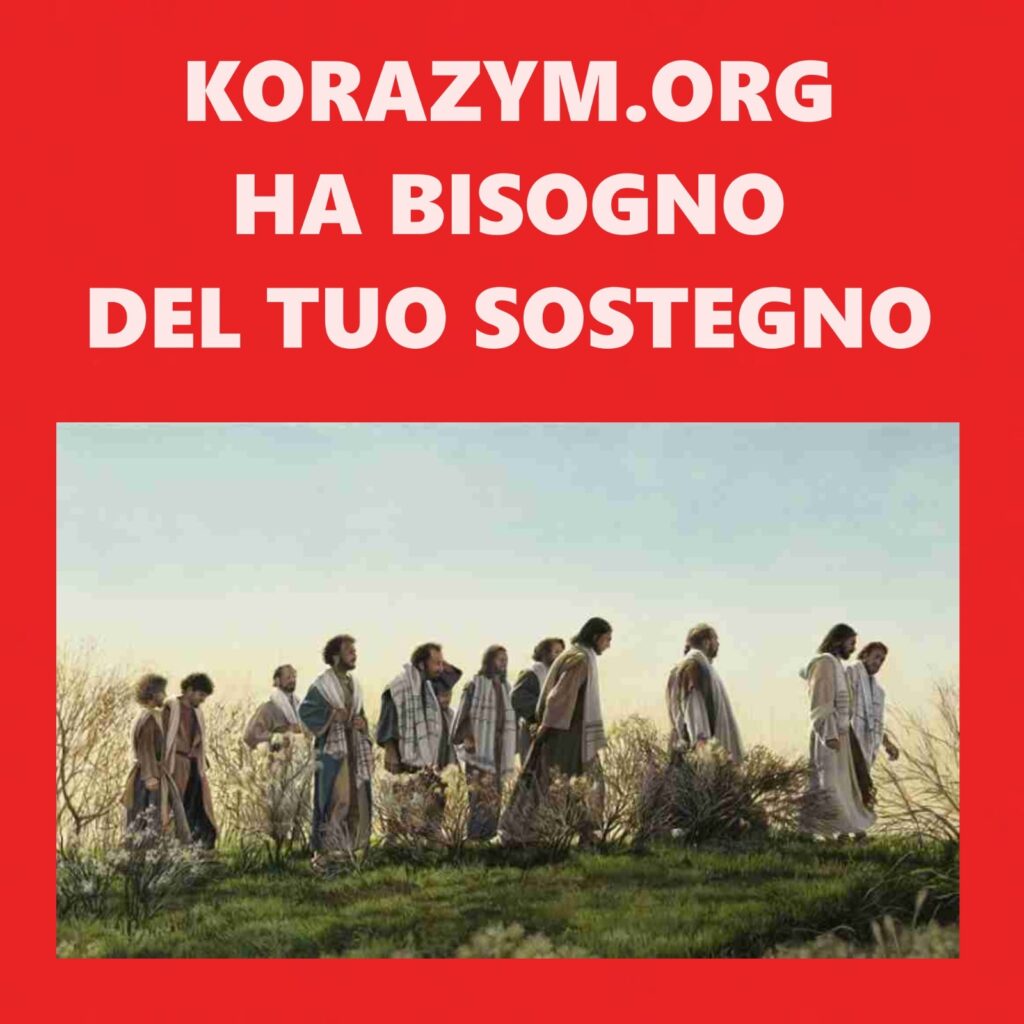Sars-CoV-2. Divulgazione scientifica – Parte 11: What’s Behind the Mask?
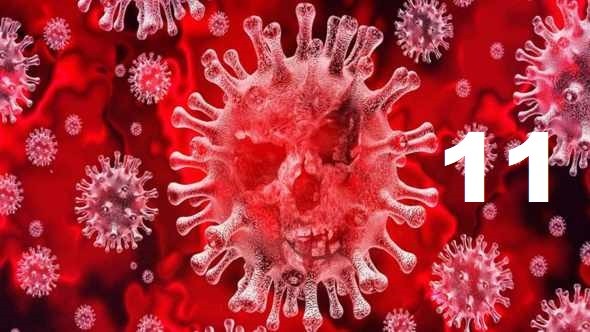
L’articolo che condivido di seguito è di Dr. Christina Jones del 7 september 2020, rilanciato da Edward Pentin sul suo blog oggi 19 settembre 2020. L’autore è un medico certificato che esercita sulla costa orientale degli USA e che ha curato dozzine di pazienti con Covid-19. Attualmente sta utilizzando uno pseudonimo a causa della sensibilità della sua posizione.
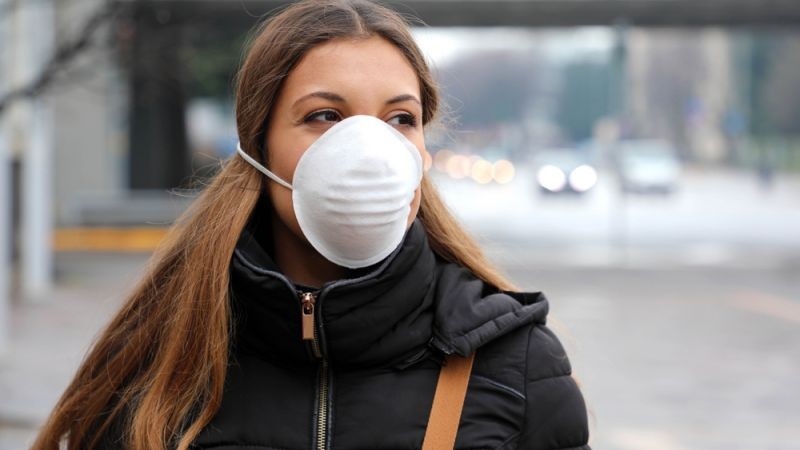
On January 20, 2020 the first case of Covid-19 was officially diagnosed in the United States of America. As of September 2020, over 6 million people have tested positive for the virus and over 185,000 have died of it. One of the consequences of this deadly pandemic has been the nearly universal endorsement and/or requirement of face masks and/or N-95 respirators for both hospital and/or community use. Of note, facial masks, also called medical or surgical masks, are different than respirators, since respirators are designed to filter out much smaller particles, such as viruses.
Two important questions must be answered, namely:
1: Are face masks and/or N-95s effective?
2: Are there any major side-effects from medical or surgical masks and/or N-95 respirators?
In the past, when I have attempted to raise these questions within the medical community it has often resulted in “bad feedback vibes” making me feel as if I committed an of act of insubordination. But the answer to these questions was not clear as of March 31st, 2020 when The New York Times noted: “… the World Health Organization and the Center for Disease Control and Prevention have repeatedly said that ordinary citizens do not need to wear masks unless they are sick and coughing.” The CDC has since changed its position and as of this writing (September, 2020), their web site notes: “CDC recommends that people wear cloth face coverings in public settings and when around people who don’t live in your household, especially when other social distancing measures are difficult to maintain.”
I must admit, something about their current conclusion perplexed me. Researchers have been publishing studies regarding mask efficacy for the last 15 years: how is it that up to March 31, 2020, after presumably reviewing the world literature, the CDC concluded that mask-wearing was not efficacious in public settings, only to change their minds a few days later? I was curious: had a new large prospective study come out showing mask efficacy this year? (Answer: No). Had the CDC misread over 20 years of research? (Answer: Unlikely). Is the Corona Virus smaller than the influenza virus so perhaps the older literature might not apply? (Answer: No); they are both about the same size, 120 nm). Then on what basis did the CDC and consequentially almost every other medical and political institution promote and often mandate mask coverage? Was it simply that this new virus was so toxic and contagious, that failure to do something which might help even a little, would be seen as one of the worst mistakes in history? (Answer: Sounds more like it)
Upon reviewing the literature on mask efficacy since the Covid-19 pandemic escalated, I noticed that research papers published since the onset of the disease, almost universally concluded that mask efficacy was extremely high, a conclusion which perplexed me since these authors often cited previous studies which were not conclusive. One of the largest review studies, quoted to me by an infectious disease colleague, was published in The Lancet (June 27, 2020 Chu et al), funded in part by the World Health Organization, and concluded that: “Face mask use could result in a large reduction in risk of infection,” noting an astounding 85% reduction in the spread of viral infections. I was also astonished that they concluded that eye protection resulted in a statistically significant 78% reduction of viral transmission! This meta-analysis made me curious. How could a broad new meta-analysis now find that masks were extremely effective in preventing viral transmission, when just a few months ago, the World Health Organization and the CDC had concluded that masks did little to stop the spread of Covid- 19? In addition, if the findings of the Lancet study were true, why has there been almost no emphasis on eye protection as of this date (September, 2020) while focusing almost solely on respiratory protection?
In analyzing this large study, I noted a few key features that would explain how this meta-analysis came to these conclusions. The first, probably most glaring fallacy seemed to be found in Figure 4 of their paper, which listed 29 retrospective studies that compared the number of infected people prior to and after institution of facial mask implementation for different viruses (ie, SARS, COVID-19, MERS). Unfortunately, in general, one cannot get good results from any retrospective study-or a meta-analysis which incorporates retrospective studies – if the variable you are studying is closely associated with other variables which highly correlate with the study variable. The problem here is that people tend to change a lot of things at the same time when a virus breaks out and mask implementation is only one of them. Think of all the factors that correlate with mask use: increased physical distancing, hand washing, staying at home, shopping habits, travel with mass transit, restaurant dining etc.
Therefore, meta-analyses that rely only on retrospective studies in which the factor being studied is highly correlated with concurrent factors are regarded as weak at best. This statistical phenomenon is referred to as multicollinearity, which occurs when independent variables in a regression model are correlated. This correlation is a problem because independent variables should be independent. That is why for example, one of the studies cited in the Lancet analysis was that of Nishiura et al (Am J Trop Med, 2005), funded by the CDC, noted that mask use provided a 70% decrease in SARS transmission, however, when accounting for correlating variables the author’s conclusion was: “Put simply, the use of masks alone was shown to be insufficient to contain the epidemic.”
So, if the information in retrospective studies all suffer from multicollinearity, how can we possibly measure mask efficacy? There are two methods that would yield a more accurate answer.
The first is what I refer to as “bulk transmission.” What is “bulk transmission?” This refers to the quantitative decrease in viral load when one coughs or sneezes. For example, Hui et al (Plos One, 2012) measured length of air flow of particulate matter in response to coughing comparing dispersion distances for the following: 1) without a mask, or 2) with a surgical mask or 3) with an N-95 respirator. No mask resulted in 68 cm length of flow, surgical mask was 30 cm, and N-95 mask was 15 cm. However, they also discovered that while masks markedly decreased horizontal air flow of particulate matter (ie, in the direction of the cough) lateral dispersion (ie, perpendicular or outflow around the mask) was very different. Lateral dispersion for the three was as follows: no mask resulted in 0 cm of lateral flow, face mask was 28 cm and N-95 was 15 cm. Therefore, it would appear that while masks do decrease the travel distance of particulate matter horizontally compared to no mask, they still allow a good bit of lateral flow, or “escape flow.” Simply put, when coughing, one can still expect a significant amount of air flow through the side portals of the mask, and therefore viral load or bulk viral transmission while likely reduced, does not appear to be efficiently inhibited.
The second way, and I would argue, the only way, to test if masks are truly efficacious, is via a prospective study. In these studies, also called randomized controlled trials, two groups of people, usually health workers, are closely matched with the exception of the variable to be measured, namely, the use of a facial mask or N-95 respirator. These studies are much more difficult to perform than retrospective studies. Unfortunately, there has never been a single prospective study regarding risk of Covid-19 infection and mask use. However, there have been a handful of prospective studies on transmission of viral particles similar in size to that of the Corona virus which are probably our best guide at this point.
So, what does the world literature on prospective studies and viral transmission show?
Dr. C. Raina MacIntyre, a physician from the University of New South Wales in Sydney Australia, is the world’s top publisher of prospective studies on masks and viral transmission over the past 15 years. She has worked with researchers from around the world and recently published a comprehensive overview of the subject (Int. J of Nursing Studies, 2020). She divided the studies into three categories, namely: Health Care mask trials; Community mask trials; and Sick Patient mask trials. What did she find?
Health Care Mask Trials
As a physician I was especially curious to see what the findings were in health care workers who did or did not wear a mask. Table 2 in her paper cites 6 prospective studies, three of which were published by her.
MacIntyre et al (www.influenzajournal.com, 2011) studied 1441 Chinese women from 15 hospitals in Beijing during the Winter of 2008 and 2009. They noted N-95 masks resulted in a statistically significant decrease in infection while surgical masks were not superior to controls (ie, no mask). For example, non-fit tested N-95 masks resulted in a 67% reduction in lab- confirmed viral infection {0.33 (0.12-0.89; p=0.05} while medical masks showed no statistically significant improvement.
In her second study, in the 2015 British Medical Journal, MacIntyre et al examined 1607 Hospital Healthcare workers in Hanoi Vietnam, with recruitment starting in March 2011. The cohorts were randomized into those that wore surgical masks vs. cloth masks. Viral rates were compared in both groups, specifically measuring laboratory confirmation of RSV, human metapneumovirus, Influenza A and B as well as several other viruses such as other variants of corona virus (ie, SARS-CoV0 and coronavirus 229). Viral penetration was almost 97% for cloth masks and 44% for surgical masks. Viral infection rate was 1.64-fold higher for cloth masks verses surgical masks.
In her third study, MacIntyre (Am. J Respir Crit Care Med, 2013) studied 1669 hospital workers in China in the winter of 2009-2010 and compared medical masks to N-95 respirators. Laboratory confirmed viral infection rate was 1.5-fold higher in mask-users verses N-95 users.
In another prospective study published in JAMA (Nov. 4, 2009), Loeb et al studied 446 nurses and found no statistical difference in influenza rates between nurses who used surgical masks (ie 23.6%) vs fit-tested N-95 masks (ie, 22.9%) but had no control arm.
Radonovich et al (JAMA, 2019) studied 2862 randomized patients and compared influenza rates for medical masks vs N-95 respirators in a trial that began enrollment in 2011 and enrolled people from several large cities in the United States. They found no statistical difference in the incidence of laboratory-confirmed influenza rates but had no control arm.
Therefore, in conclusion, when analyzing the prospective studies of health care workers which had a control group, only continuous N-95 mask use was associated with a statistically significant decrease in the risk of lab-tested viral infection. As Dr. MacIntyre summarized in her 2020 paper: “For healthcare workers, the only trials to show a difference between respirators and masks demonstrated efficacy for continuous use of a respirator through a clinical shift, but not masks.” Interestingly, she found that cloth masks worn by health care workers might actually increase the risk of infection (MacIntyre, 2015).
Community Mask Trials
Before addressing this, remember that there has never been a randomized controlled trial on this cohort for Covid-19. MacIntyre’s review paper does cite several studies which measure mask efficacy in the community for other viruses such as influenzae. She cited eight studies in Table 1 of her paper. The two largest studies were performed by Aiello et al. Almost all of the studies, including Aiello’s, found no significant benefit if the subjects were randomized and followed without adjustment, that is intention to treat analysis. Intention to treat means that in a randomized controlled trial, the researcher randomizes subjects into two different groups, such as those who do and do not wear masks. Often subjects are dropped from a study for such reasons as non-compliance but in the intention to treat analysis, subjects remain included, thereby simulating real life conditions more accurately. For example, if mask wearers took off their masks during times when they were speaking on the phone, which likely is the case with some people, they would still be included in the study.
If we examine the two largest studies we note that Aiello et al. (2010, J of Inf Dis) studied 1437 college students in the United States and found that face mask use had a trend toward protection, that is an overall 10% non- significant decrease in risk when measured on weekly intervals 0.90 (0.77- 1.05, p=0.19). They concluded in their abstract that: “Neither face mask use and hand hygiene nor face mask use alone was associated with a significant risk reduction in the rate of influenza- cumulatively.”
In their 2012 paper (Plos One) Aiello et al followed 1178 university students during the 2006-2007 flu season. They found a non-significant 8% trend in risk reduction for face mask use versus no use 0.92 (0.59-1.42).
Sick Patient Mask Trials
Up until now we have concentrated on the potential benefit of masks for the person wearing the mask, but do masks decrease transmission of virus from sick people to healthy people? This may be a harder question to answer. Prospective studies can measure if the people who wear mask/respirators have a higher chance of contracting the virus than the controls who do not wear them. What they cannot easily measure is if wearing a mask by the sick patient will decrease the infection rate in other people in the community, for in order to do this one would have to place infected people who wear masks in close proximity to uninfected people which might be ethically challenging.
However, MacIntyre et al did give us some information in their 2020 analysis. She analyzed five prospective studies in Table 3 of her study, in which the sick person in a household wore a mask and measured risk of transmission.
Two of the studies failed to examine human to human transmission, specifically Johnson et al (CID, 2009) measured viral transmission into a Petri dish while Leung et al (Nature Medicine, 2020) measured viral flow in exhaled breath. The third study, by Canini et al (Plos One, 2010) studied 105 influenza cases in France and found no significant difference between flu transmission with a surgical mask (ie, 16.2%) versus no mask (ie, 15.8%). The largest study by MacIntyre et al (2016) showed no difference in laboratory confirmed viral infections between mask and non-masked sick patients in households (RR 0.97 95% CI 0.06 to 15.54). The fifth study by Barasheed et al (Infectious Disorder-Drug Targets, 2014) studied Australian Muslim pilgrims who attended the Hajj pilgrimage in Mecca, Saudi Arabia. Conditions were ideal for study in that groups of pilgrims often stay in very close proximity, living in tents. People who tested positive for viral infection were randomized into tents where the case group subject and all others in the case group’s tent were offered and encouraged to use surgical masks, while everyone in the control group’s tent, including the infected person, were not offered or encouraged to use face masks.
What did this important study find? There was no significant difference in laboratory confirmed viral illness between the groups, however, subjects who used facial masks did report fewer flu-like symptoms. Therefore, none of the prospective studies in MacIntyre’s review showed any statistically significant improvement in laboratory confirmed viral illness among initially non- infected cohorts when sick patients wore surgical masks in their presence.
Given the noted findings of the prospective studies showing no statistically significant benefit of face masks, the question could be raised, is there another vector of transmission that masks fail to protect against? One such vector is the possibility of conjunctival transmission, that is the spread of the virus into the eye by aerosol or direct contact from one’s own fingers. We noted earlier that the Lancet study by Chu et al, while retrospective, showed a statistically significant 78% risk reduction in viral transmission compared to no eye protection {aOR 0·22, 95% CI 0·12 to 0·39). Recently researchers (Zhou et al, The Ocular Surface, 2020) have found a key receptor called ACE2, which serves to bind Covid-19 to bodily tissue. They noted it was present in conjunctival and corneal sampling. They concluded: “Together, these results suggest that ocular surface cells including conjunctiva are susceptible to infection by SARS-CoV-2, and could therefore serve as a portal of entry as well as a reservoir for person-to-person transmission of this virus. This highlights the importance of safety practices including face masks and ocular contact precautions in preventing the spread of COVID-19 disease.” This was echoed recently by Dr. Anthony Fauci who noted on July 29, 2020 in an ABC News story by Caterina Andreano that: “You have mucosa in the nose, mucosa in the mouth, but you also have mucosa in the eye,” he continued. “Theoretically, you should protect all the mucosal surfaces. So, if you have goggles or an eye shield you should use it.”
Side Effects of Masks and Respirators
What about the side effects of masks? MacIntyre et al noted in 2011 (Influenzae and Other Resp Viruses), that 13.4% of people who wore N-95 masks complained of headache, 19.4% complained of difficulty breathing, 8% noted difficulty communicating with a patient and 41.9% complained of general discomfort.
But what about two other questions, one of which is often asked and the other, almost never? Do masks or respirators increase the inhalation of carbon dioxide, which in turn may lead to headaches, acidosis, arrhythmias and changes in mental acuity? The Mayo Clinic recently posted the answer to this question on their web site: (mayoclinichealthsystem.org)
“Myth: Wearing a mask will increase the amount of carbon dioxide I breathe and will make me sick.
For many years, health care providers have worn masks for extended periods of time with no adverse health reactions. The CDC recommends wearing cloth masks while in public and this option is very breathable. There is no risk of hypoxia, which is lower oxygen levels, in healthy adults. Carbon dioxide will freely diffuse through your mask as you breathe.”
In addition, on July 18, 2020 issue of USA today they quoted the CDC as saying: “Carbon dioxide can build up in face masks, but is unlikely that wearing a mask will cause hypercapnia, according to the CDC.”
However, this may not be true for selected subgroups everyone. For example, Roberge et al, who noted in 2010 (Respir Care) while analyzing 10 different health care workers who wore N-95 respirators for an hour, that compared to controls who wore no masks, the “dead-space carbon dioxide and oxygen levels were significantly above and below, respectively…and elevated partial pressure of carbon dioxide is a possibility.” Specifically, they noted that 2 of the 10 health care workers (ie, 20%) had PCO2 (partial pressure of carbon dioxide) levels above 50 mm Hg (ie, normal being 40 mm Hg). Therefore, it may very well be that certain people are more prone to elevated carbon dioxide levels when wearing N-95 masks.
Pregnant women may be at particularly high risk. For example, Tong et al (Antimicrobial Resistance and Infection Control, 2015) studied 20 pregnant women between 27-32 weeks gestational age and noted that “Although no changes in the inspired oxygen and carbon dioxide concentrations were demonstrated, breathing through N-95-mask materials during low intensity work (3 MET) reduced expired oxygen concentration by 3.2% (95 % CI: −4.1 % to −2.2 %, p < 0.001), and increased expired carbon dioxide by 8.9 % (95 % CI: 6.9 % to 13.1 %; p <0.001) suggesting an increase in metabolism.”
Another possible long-term side effect that has not been discussed at all in the literature is the question of inhalation of polypropylene fibers from surgical masks or N-95 respirators. An informal survey of a small group of health care workers by myself found that about 50% of workers noted that their masks began to fray at the end of their shift, noting fibers that itched their face and nose. But what are these fibers composed of and are we inhaling them? The dominant material in masks and respirators is a plastic polymer called polypropylene.
When polypropylene is inhaled in factories where it is manufactured, that is in factories in which workers are likely to inhale polypropylene fibers, it has the potential to result in an increased risk of a type of interstitial lung disease called Flock Worker’s Lung, named so because of the lung disease found in flocking plants. Atis et al studied workers employed in a flocking plant that used polypropylene (Eur. Respir J, 2005). They noted: “logistic regression analysis showed that the risk of respiratory symptoms increased 3.6-fold in polypropylene flocking workers when compared to controls…” they also measured CT scans in patients (which will show evidence of lung damage from interstitial lung disease) and noted that “high resolution CT scan in a limited number of subjects, are indicative of the beginning of or mild interstitial lung disease…” They also noted a significant decrease in carbon monoxide diffusing capacity in exposed workers vs controls, namely a 10 point reduction from 85.6 to 75.8) which was highly significant (p=0.001). A decrease in diffusing capacity is a hallmark for lung damage, especially from interstitial lung disease. So, is it possible that prolonged use of facial masks or N-95 respirators, which contain polypropylene may increase the risk of long-term interstitial lung disease when one inhales the frayed fibers? To date, no one has raised the question.
Conclusions:
* Retrospective studies or meta-analyses thereof, cannot accurately measure mask efficacy due to the phenomenon of multicollinearity.
* The only way to accurately measure mask or respirator’s efficacy regarding Covid-19 is through a randomized controlled trial also called a prospective trial. To date, no such trial has been done.
Regarding Health Care workers:
* Only one prospective trial has analyzed mask and respirator use versus controls for viral transmission (MacIntyre et al, 2011). They found that while N-95 respirators reduced viral transmission, face masks did not show a significant reduction. Most of the other prospective studies showed no real difference between face masks or N-95 respirators. Therefore, to date, the prospective studies for non-Covid 19 viruses support N-95 use over simple surgical masks.
Regarding Masks in the Community setting:
* Cloth masks appear to do little to slow viral transmission of viruses allowing 97% viral penetration and may increase transmission according to a study by MacIntyre et al (2015) in the health care setting. This finding may or may not extrapolate to the community setting, but this author could find no prospective study that showed efficacy.
* Surgical Masks: Intention to treat prospective studies on non-Covid viral transmission have not shown any significant differences between mask vs non-mask use in the community (MacIntyre review, 2020, Table 1). This may in part be explained by MacIntyre’s 2015 study which noted a 44% viral penetration rate in medical masks. Two of the largest studies in MacIntyre’s review study did show an 8-10% reduction in viral transmission rates with mask use, although these were statistically insignificant.
Regarding Masks Worn by the Sick Index patient
* MacIntyre’s review paper noted no significant difference in virally transmitted disease in the scenario where the sick patients wore masks, however Barasheed et al. (2014) did note that patients in confined tents had fewer respiratory symptoms if everyone wore a mask.
Explanation of low Efficacy of Masks
* A possible explanation for the lack of statistically significant efficacy of masks in the health care, community or home setting involves the potential of viral transmission to a person’s conjunctiva. If after further study this route proves to be significant, as suggested by the Lancet review, it could explain part of reason why prospective studies show no significant benefit of surgical masks.
Side Effects:
* Some studies in selected groups such as pregnant women show that N-95 use increases carbon dioxide levels. Also, about 20% of health care workers in a small study showed significant elevations of carbon dioxide (ie, over 50mm).
* No one to date has raised the question of whether long term surgical or medical mask use or N-95 respirators-many of which are composed of significant amounts of polypropylene, could cause long-term interstitial lung disease, such as Flock Worker’s lung, found in workers exposed to polypropylene fibers.
Editorial Comment:
Each person and each society needs to make an informed choice of the benefits versus risks of mask and/or respirator use to themselves and to society at large. General recommendations by the medical community or government agencies must be grounded in the literature. This author’s own opinion is that transmission of highly infectious viruses such as Covid-19 could be impacted if all members of society wore protective goggles and N- 95 respirators all of the time. The feasibility of such an approach is questionable.
Funding: None
Conflict of Interest: None
This article may be published and/or copied by anyone so long as its content is not amended in any way
Requests for Interviews or queries may be directed to: Email
Articoli precedenti
0 – Sars-CoV-2. Divulgazione scientifica volta a contrastare disinformazione e false notizie che imperversano nocivamente – Introduzione – 25 marzo 2020
1 – Sars-CoV2. Divulgazione scientifica – Parte 1 – Covid-19: Casi asintomatici e periodo d’incubazione – 25 marzo 2020
2 – Sars-CoV-2. Divulgazione scientifica – Parte 2: Persistenza del virus nell’ambiente e sulle superfici – 25 marzo 2020
3 – Sars-CoV-2. Divulgazione scientifica – Parte 3: Genesi e sviluppo di zoonosi che diventano pandemie. Dipendono solo da noi – 27 marzo 2020
4 – Sars-CoV-2. Divulgazione scientifica – Parte 4: Covid-19 è pericolosa per cani e gatti? Possono trasmetterla all’uomo? – 5 aprile 2020
5 – Sars-CoV-2. Divulgazione scientifica – Parte 5: Terapie possibili nei trattamenti e per frenare il Covid-19 – 12 aprile 2020
6 – Sars-CoV-2. Divulgazione scientifica – Parte 6: La fuffa di Montaigner “una solenne e pericolosa fesseria”. Il nuovo coronavirus non è artificiale – 22 aprile 2020
7 – Sars-CoV-2. Divulgazione scientifica – Parte 7: Bufala del “blitz dei Nas” a Mantova “per fermare i test della plasmaterapia” – 5 maggio 2020
8 – Sars-CoV-2. Divulgazione scientifica – Parte 8: Bloccare trombosi per evitare ingresso virus nei polmoni e polmonite interstiziale – 5 giugno 2020.
9 – Sars-CoV-2. Divulgazione scientifica – Parte 9: Alcune considerazioni sulla situazione della pandemia Covid-19 – 16 agosto 2020
10 – Sars-CoV-2. Divulgazione scientifica – Parte 10: Il libro del Prof. Tritto “Cina Covid-19”: il Coronavirus di Wuhan è una “chimera” cinese – 27 agosto 2020












